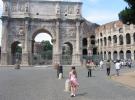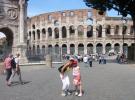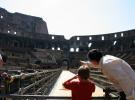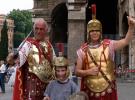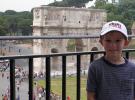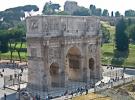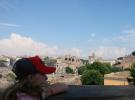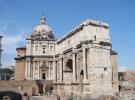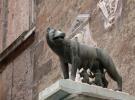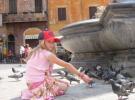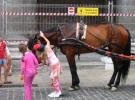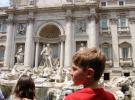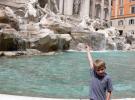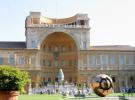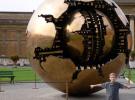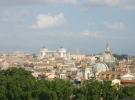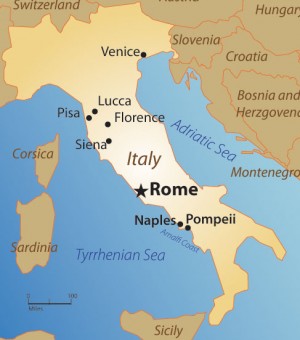Destinations > Europe > Italy > Rome
Destination:
Rome
- Overview
- Basics
- Getting Ready
- Don't Miss
- Best Hotels
- Best Restaurants
- Best Shopping
- Explore By Area
- Day Trips
- Extended Trips
- Key Events
- Monthly Calendar
- Contacts
Basics
topWhen to Go
The best time to visit Rome is the in spring (late March–May) or fall (September–October), when the temperature should be pleasantly warm and there is less chance of rain. Summer is hot, and apart from an occasional dramatic thunderstorm, dry and sunny. Many Italians go on vacation in August, so although most attractions are open, some restaurants and shops are closed. Winters are generally mild and damp, and snow is rare.
topWeather & Climate
| Rome, Italy | |||||||||||||||||||||||||||||||||||||||||||||||||||||||||||||||||||||||||||||||||||||||||||||||||||
| JAN | FEB | MAR | APR | MAY | JUN | JUL | AUG | SEP | OCT | NOV | DEC | ||||||||||||||||||||||||||||||||||||||||||||||||||||||||||||||||||||||||||||||||||||||||
| Average High Temperature | F | 55 | 56 | 59 | 63 | 71 | 77 | 83 | 83 | 79 | 71 | 62 | 57 | ||||||||||||||||||||||||||||||||||||||||||||||||||||||||||||||||||||||||||||||||||||||
| C | 12 | 13 | 15 | 17 | 21 | 25 | 28 | 28 | 26 | 21 | 16 | 13 | |||||||||||||||||||||||||||||||||||||||||||||||||||||||||||||||||||||||||||||||||||||||
| Average Low Temperature | F | 39 | 40 | 43 | 47 | 54 | 61 | 66 | 67 | 62 | 56 | 46 | 42 | ||||||||||||||||||||||||||||||||||||||||||||||||||||||||||||||||||||||||||||||||||||||
| C | 3 | 4 | 6 | 8 | 12 | 16 | 18 | 19 | 16 | 13 | 7 | 5 | |||||||||||||||||||||||||||||||||||||||||||||||||||||||||||||||||||||||||||||||||||||||
| Average Precipitation | in | 3.2 | 2.8 | 2.7 | 2.6 | 2 | 1.3 | 0.6 | 1 | 2.7 | 4.5 | 4.4 | 3.8 | ||||||||||||||||||||||||||||||||||||||||||||||||||||||||||||||||||||||||||||||||||||||
| cm | 8 | 7 | 6 | 6 | 5 | 3 | 1 | 2 | 6 | 11 | 11 | 9 | |||||||||||||||||||||||||||||||||||||||||||||||||||||||||||||||||||||||||||||||||||||||
topTime Difference
Set your watches for Central European Time (CET), one hour ahead of Greenwich Mean Time (GMT) and six hours ahead of US Eastern Standard Time (EST). Set your clocks ahead one hour in March (back in October) for Daylight Savings Time.
topPassport & Visa Requirements
A passport valid for 6 months is needed to enter Italy. EU nationals and citizens of the United States do not need a visa for stays up to 90 days.
topMoney Matters
Currency
Italy's currency is the Euro. Notes come in €5, €10, €20, €50, €100, and €200 denominations. Coins come in €1, €2, 50c, 20c, 10c, 2c and 1cent pieces.
Changing Money
For best rates, change money at a bank or an American Express office. For convenience, look for ATM machines and storefront exchange services ("Cambio").
Credit Cards
Most establishments accept major credit cards.
Travelers' Checks
Travelers' checks are still the safest way to carry large sums of money. Check the exchange rate before you go to see whether you should get them in dollars, pounds sterling or euros.
Tipping
Italians do not tip heavily. Service is often included in your restaurant and hotel bill, although a little extra is appreciated if the service has been good.
General guide:
Pizzerias/trattorias–round up to the nearest euro
Smart restaurants–10%
Taxis–round up to the nearest €2
Porters–50c to €1 per bag
Chambermaids–50c to €1per day
Cloakroom attendants–50c
Toilets–25c
topPhone
Dialing Codes
Country code for Italy is 39, city code for Rome is 06
When calling from US, dial 011 + 39 + 06 + local number.
To call from Rome abroad, dial 00 + country code + city code + local number.
To call from one city to another in Italy, you must dial city code, including 0, followed by the local number. To call within city, you must still dial the city's code, including the 0. Local numbers in Italy can have anywhere from 4 to 8 digits.
Emergency Numbers
112 Police
113 Emergency
115 Fire
116 Car Breakdowns
118 Ambulance/Medical Emergencies
Information
100 Operators
155 International Operators
US Embassy 06 46741
Mobile Phones
Rome's mobile phones use a 900 or 1800 GXM system. Check with your service provider before leaving home to see if yours will work in Italy. If it doesn't, you might want to buy or rent a temporary mobile phone for your trip.
topElectrical
Electricity is 220V 50Hz throughout Italy. Plugs have two round pins (sometimes three). If you want to use US equipment (120V 60Hz) you will need to bring an adaptor.
topCustoms
Italians are very family oriented. They love having children around so you can be sure yours will be welcome wherever they go. A few phrases, regardless of pronunciation, will keep you in good step with the locals.
On meeting people or entering stores or restaurants, us a simple buon giorno (good day) or buono sera (good afternoon or evening). Please is per favore, thank you grazie, and prego means you’re welcome.
Before a meal, say buon appetito (eat well), to which the reply is grazie, altrettanto, (thank you, and the same to you). Before a drink, the toast is salute (good health). Say permesso when you wish to pass, and mi scusi if you wish to apologize.
Kissing on both cheeks is a greeting common for men and women when you know them well.
Dress appropriately in churches and do not enter churches when services are in progress. Italians particularly in cities are very fashion oriented. They tend to dress well–casual chic.
Copyright 2013 MyLittleSwans, LLC. All rights reserved. My Little Swans, the logo and Share a world of experience are registered Trademarks of MyLittleSwans, LLC. Use of this site constitutes acceptance of our Terms of Use and Privacy Policy.


